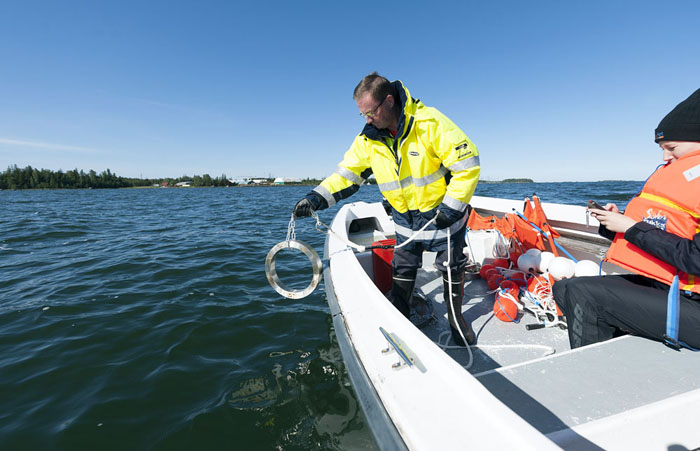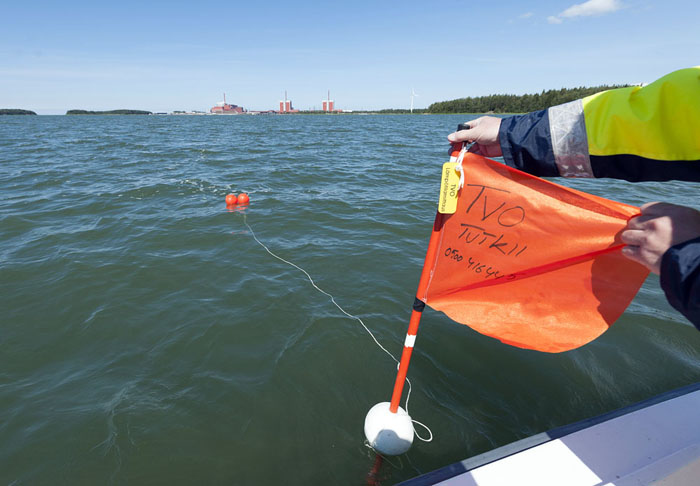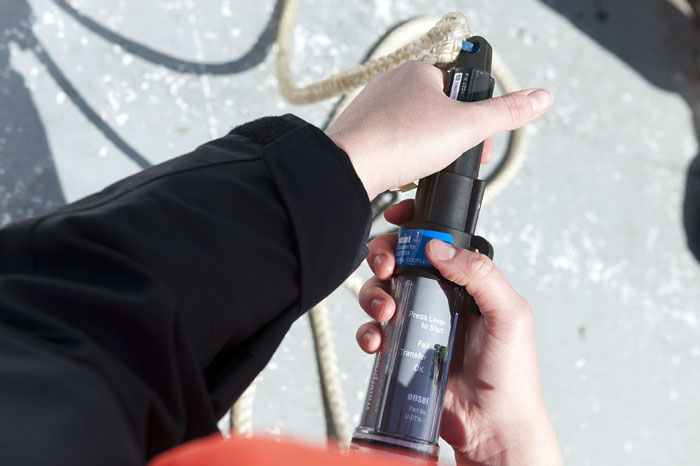Eight new temperature measurement points in sea area of Olkiluoto
The purpose of the new measurement points is to provide more accurate information about the spreading of cooling water in the sea area.
Every year 40–50 water samples are collected from the sea area of Olkiluoto and more than 100 analyses are conducted on these samples. Turku-based company Lounais-Suomen vesi- ja ympäristötutkimus Oy carries out monitoring activities in the sea area eight times a year. In addition, the status of fish populations in the area is monitored actively and controls of aquatic vegetation are carried out by means of transect diving campaigns every six years.
Temperatures have been monitored also previously, but one significant reason for adding the new measurement points was the desire to investigate the spreading of cooling water prior to the commissioning of OL3 and prior to the construction of the Kuusisenmaa embankment.

The thermal load of cooling water is considered the most important environmental impact of electricity production and seawater temperature is monitored in Olkiluoto according to the requirements of the environmental permit. Temperature monitoring is based on the moving weekly average of two measurement points located at a distance of 500 metres from the discharge opening, and the target values have not been exceeded.
- Fortum uses a similar monitoring system and the matter came up in our discussions. I thought we could utilise these measurements to verify and study how far the impact of the plant extends, says TVO's environmental engineer Johanna Koskenranta.

The new measurement points will also help verify the existing modelling of the spreading of cooling water and provide new information about the effect of wind on the propagation of the warm water.
- The coordinates of the measurement points have been entered in the OLGIS system, which contains data on locations of e.g. buildings, drillholes and environmental monitoring areas. Now we can also combine to the data the wind direction that affects the propagation of the cooling water, Johanna explains.
- Since we carry out the monitoring ourselves, we can move the measurement points and also add new points, if necessary.

Share